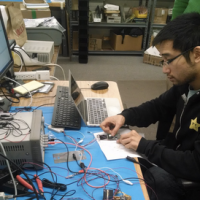Google’s Project Ara Phone: Will You Accept the Challenge?

Instead of buying off-the-shelf, are you the type of person who prefers to build your own (insert: computer, salad, kayak, house...)? What if you could build your own smartphone? Interested? If so, then Google has a mission for you—Project Ara.
Google is working on a paradigm shift for smartphones. With the current smartphone model, consumers upgrade roughly every two years to a new model with more bells and whistles. The old phone is passed on or stuck in a drawer or might even end up in a landfill somewhere.
But what if there were a modular smartphone, an endoskeleton with interchangeable parts you can customize to your needs? Google's Advanced Technology and Projects group (ATAP) is working on such a concept that will enable users to configure their own phone according to their personal preferences for things like displays, keyboards, batteries, cameras, and more. The project began when the ATAP group was still part of Motorola Mobility under Google. Although Google eventually sold Motorola Mobility, the ATAP group was retained.
In April, the early alpha Project Ara Module Developers Kit (MDK) was released at the first of three Ara Developers Conferences slated for 2014. According to Google’s website:
This early alpha release of the MDK relies on a prototype implementation of the Ara on-device network using the MIPI UniPro protocol implemented on FPGA and running over an LVDS physical layer. Subsequent versions will soon be built around a much more efficient and higher performance ASIC implementation of UniPro, running over a capacitive M-PHY physical layer.
“The phone will come in three sizes, ranging from mini to ‘phablet,’ and it will run on a future version of the Android mobile operating system,’” according to CNN. “A frame called the Endo will hold the interchangeable components together with magnets.”
Obviously, this is not a simple project. Although calling it “the most intriguing thing to happen to phones in years,” The Verge notes:
The broad outlines of Project Ara have already been announced and had plenty of doubt cast on them. It's an attempt to encourage hardware manufacturers to build modules that will slot into a metal ‘endoskeleton,’ which serves as the basic core of a phone. The camera, screen, and any other feature that you'd traditionally associate with a smartphone would exist only as a modular tile—even the processor and the power jack would be removable.
Although a firm price has yet to be announced, a bare-bones device could start at $50. The goal, according to Google, is to create a phone for the approximately five billion people who can’t afford one.
If you find this concept intriguing, Google has a mission for you. Help shape the direction of Project Ara by becoming an “Ara Scout” over the next six to twelve months and collaborate on special missions. If you choose to accept, Google promises that one hundred of the most active scouts will receive an early release version at no cost—and one that does not self-destruct either.

